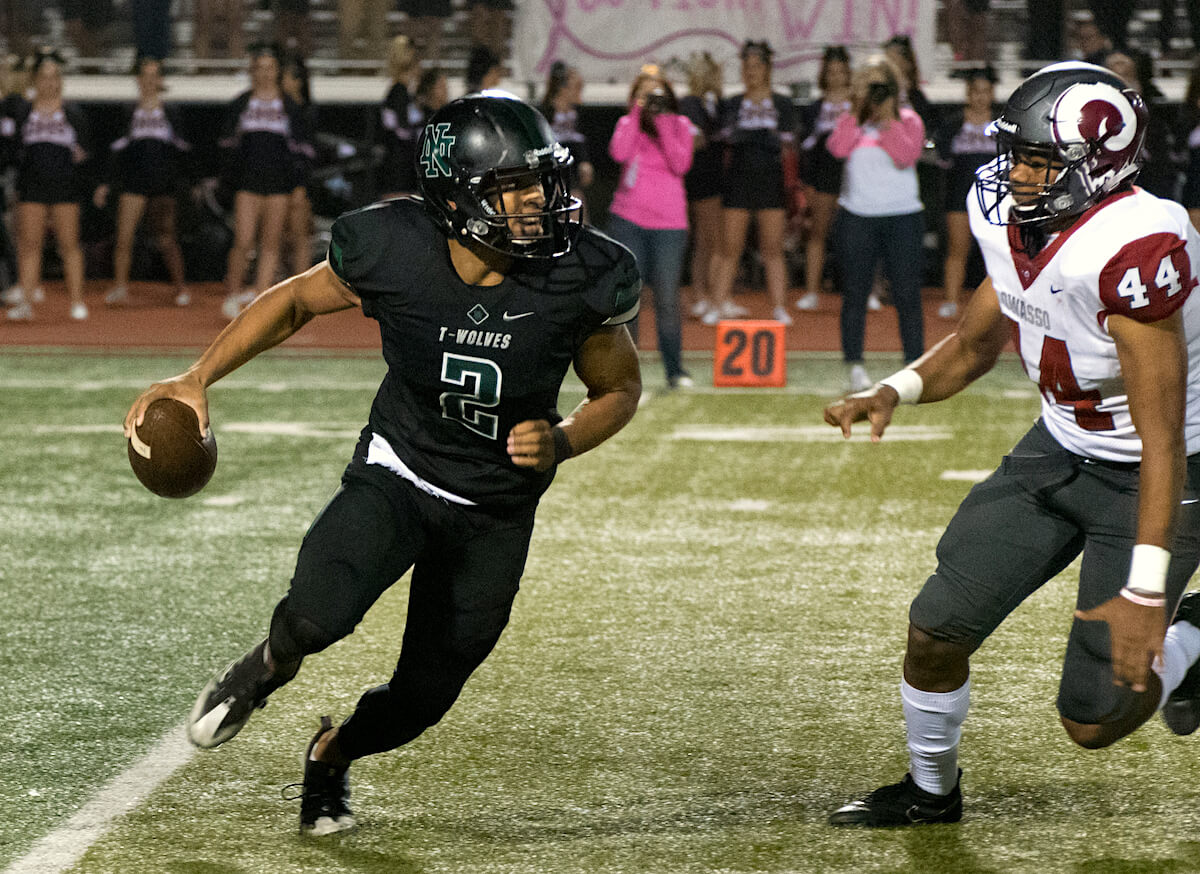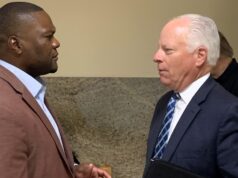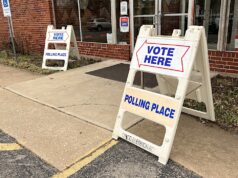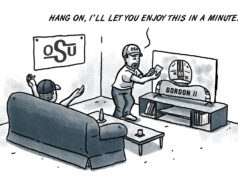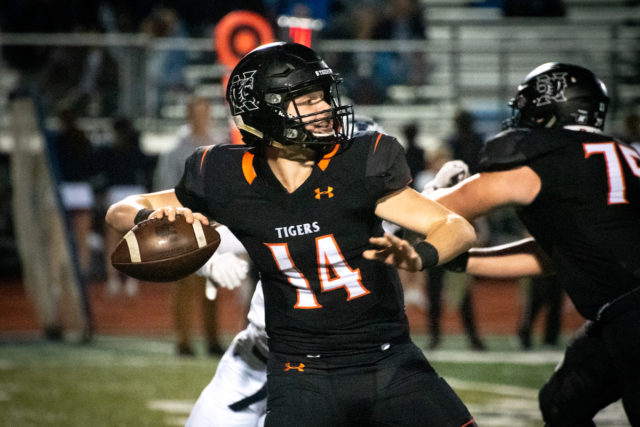
Oklahoma high school quarterbacks will have some extra protection when they find themselves under duress this fall thanks to a change in the intentional grounding rule recently approved by the National Federation of State High School Associations’ football rules committee.
The rule change now permits players purposely to throw an incomplete pass without receiving an intentional grounding penalty if the passer is outside “the pocket” (a lateral boundary of the free blocking zone) and the pass reaches the neutral zone or the extension of the neutral zone beyond the sideline.
Under the previous NFHS rule, the quarterback’s pass had to be directed near an eligible receiver to avoid an intentional grounding penalty.
The new rule more closely mirrors the safety-focused rules allowing quarterbacks to throw the ball away in college and professional football. In October 2019, NonDoc highlighted concerns that the antiquated high school rule placed student athletes at an avoidable risk of sustaining head injuries. The NFHS began surveying officials and coaches about the potential rule change in 2020, and a final vote occurred in January.
Head injuries in high school, college and pro sports have been the subject of greater scrutiny in recent years. A 2019 study by the American Academy of Pediatrics found that concussion rates among high school football players rose over a five year period.
Richard McWhirter, chairman of the NFHS football rules committee, told highschoolot.com that the intentional grounding rule change is an effort to improve player safety.
“The question (with this rule) has always been, ‘If the defense makes a good play, are we bailing out the offense by letting the quarterback throw the ball away?'” McWhirter said. “This year, I think the committee felt the wellbeing of the passers and not subjecting them to extra hits was worth changing the rule.”
Oklahoma will implement rule changes
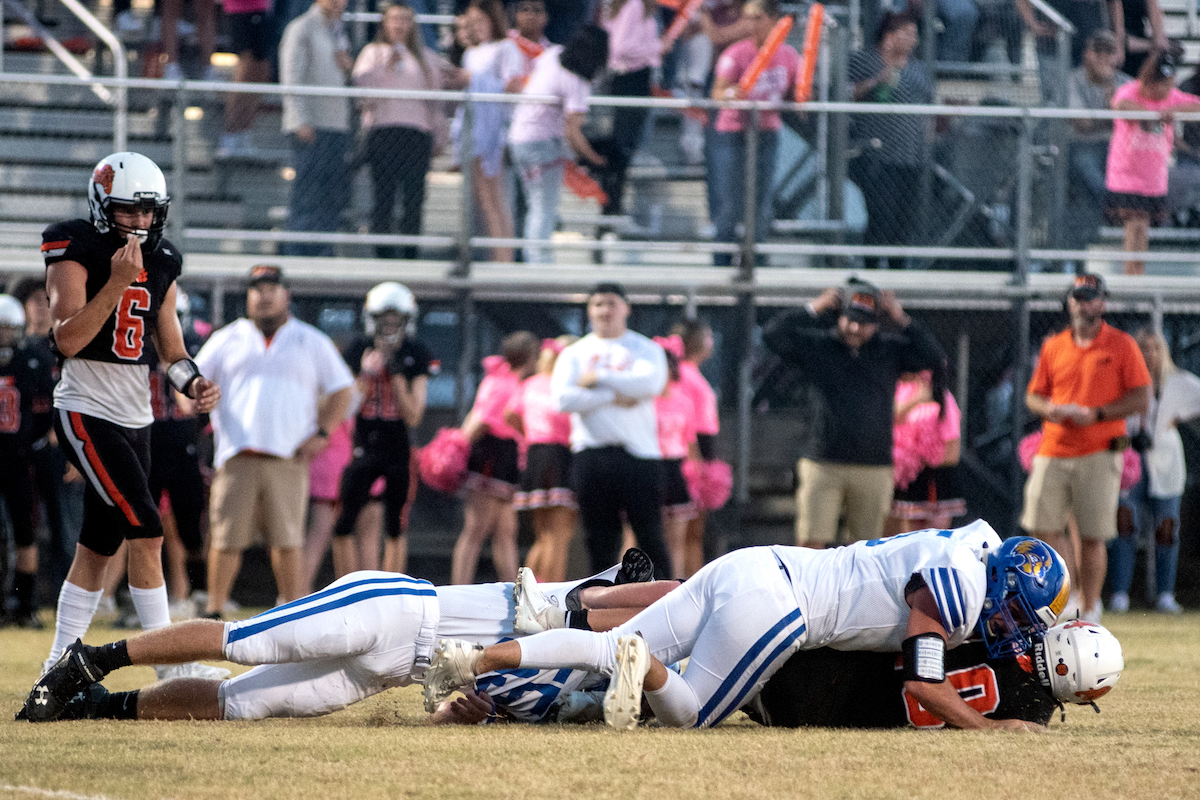
Like most state high school athletics associations, the Oklahoma Secondary Schools Activities Association uses the NFHS football rulebook, which will also feature an amended definition of “chop block” for 2022.
OSSAA associate director Mike Whaley, who previously served as Westmoore High School’s head football coach and serves on the NFHS football rules committee, said officials and coaches would be made aware of the changes at meetings held this year.
FROM 2019
High school QBs penalized if they throw the ball away by Tres Savage
“We follow NFHS rules in all of our activities where the NFHS writes a rule book,” Whaley said.
He said the intentional grounding rule change is part of an effort to become more consistent across all levels of football, including college and the NFL.
“NFHS rules are greatly impacted by empirical data showing the number and frequency of injuries in the high school game,” Whaley said. “There is a contingent among the committee members that wants more universal rules — rules that are the same at the high school level as they are at the NCAA and NFL level. There was a tremendous amount of support for this rule in that group.”
Whaley said when the NFHS changes rules, committee members attempt to ensure that those changes don’t favor one side of the ball over the other, though at times there is no way around that.
“NFHS rules are very cognizant of the offensive and defensive balance — rules that directly favor one side of the ball are discouraged,” Whaley said. “There were many members of the committee that thought this rule was a huge gain for the offense. I was one of those.”
But Whaley said the broader national conversation about football safety ultimately had more influence.
“This is certainly an optics rule, a rule that makes the game look better in the time we live in — a time of trying to minimize big contact plays,” he said. “This rule is an attempt to accomplish that. As always, the NFHS process for changing rules is thorough and represents what the majority of states favor. I’m a huge supporter of the process.”
Whaley said he expects the rule will make football safer for quarterbacks.
“Most assuredly it helps the quarterbacks,” he said. “As a former quarterback and quarterback coach, I like that.”
‘It’s a step in the right direction’

Former Weatherford High School quarterback Jaxon Ratterree sustained a head injury during a game in 2017 game, his sophomore season. Ratterree spoke to NonDoc in 2019 about being knocked unconscious while scrambling outside the pocket in a scenario directly applicable to the intentional grounding exemption now being implemented nationally.
“I don’t remember much about it, but I’ve watched film,” Jaxon Ratterree said at the time. “Basically, I was going to drop back for a pass and they brought a blitz on. So one came free. I scrambled and was running to my left. (…) There really wasn’t [any receiver] coming back, so I was just going to take off running with it. But I was going and running and a dude kind of stood me up, and I was kind of trying to break away from his tackle.
“As I was going down, two guys came and hit me on both sides of the head at the same time, and I was out cold.”
Informed of this year’s NFHS, Ratterree said he sees the intentional grounding rule change as an improvement when it comes to protecting players.
“I think it’s a step in the right direction, especially in the high school game,” he said. “You look into college and the NFL and they have the rule, too. It is a benefit to the quarterback and will make the game safer because they won’t be taking those unnecessary hits to avoid getting a penalty.”
Five years later, Ratterree said he feels fortunate not to have suffered any lingering effects from his traumatic brain injury.
“I was blessed in a sense because that was my only concussion,” he said. “For those who had got hit like that a lot more, and had more concussions, I know they can experience side effects for years afterwards. I’m lucky that it was my only big hit.”
Ratterree said he would advise high school quarterbacks to lean into the new rule whenever possible.
“Use it to your advantage,” he said. “If you have a play that’s broken down, just be smart and throw it away. You don’t have to take those unnecessary hits.”









